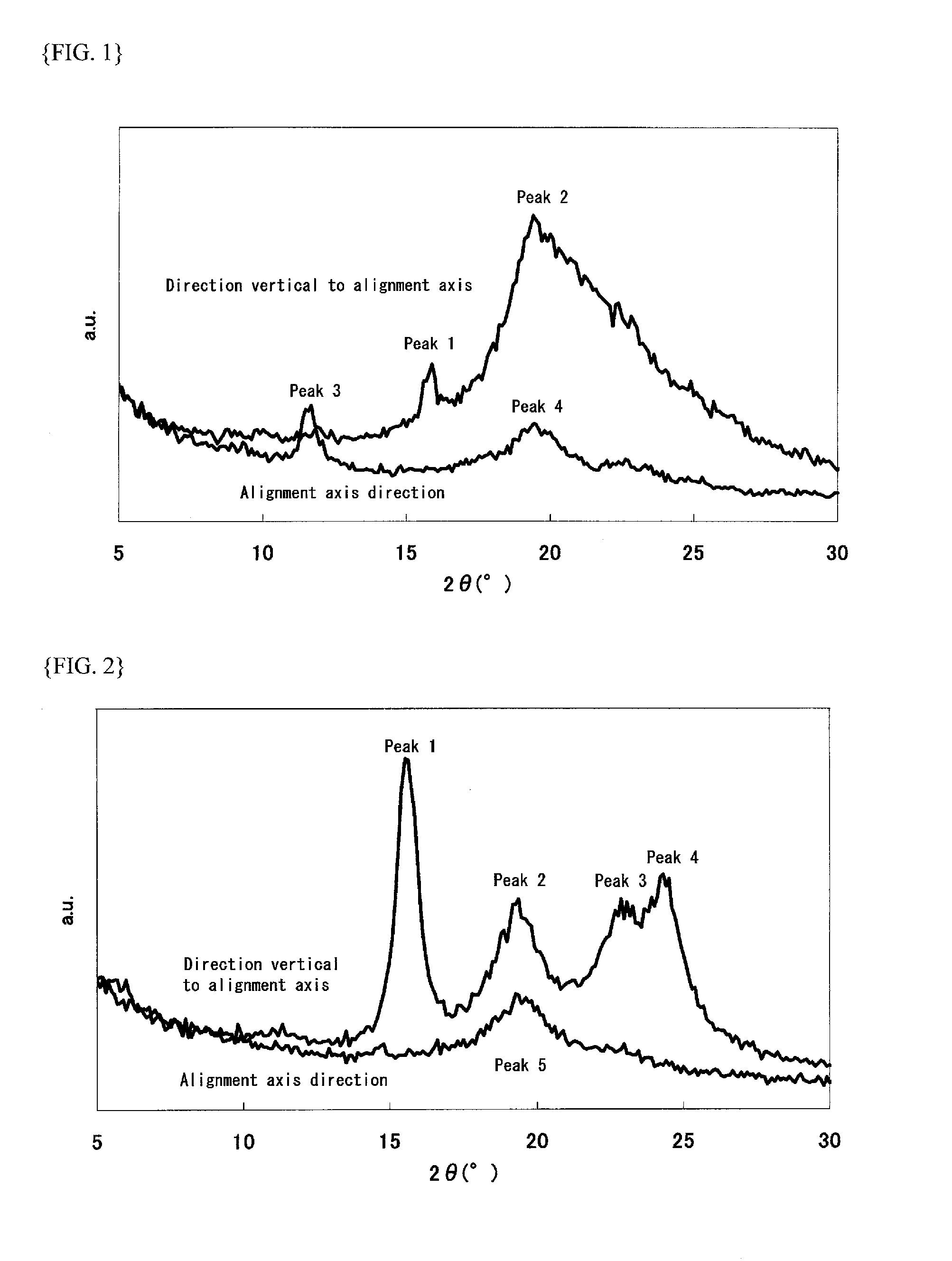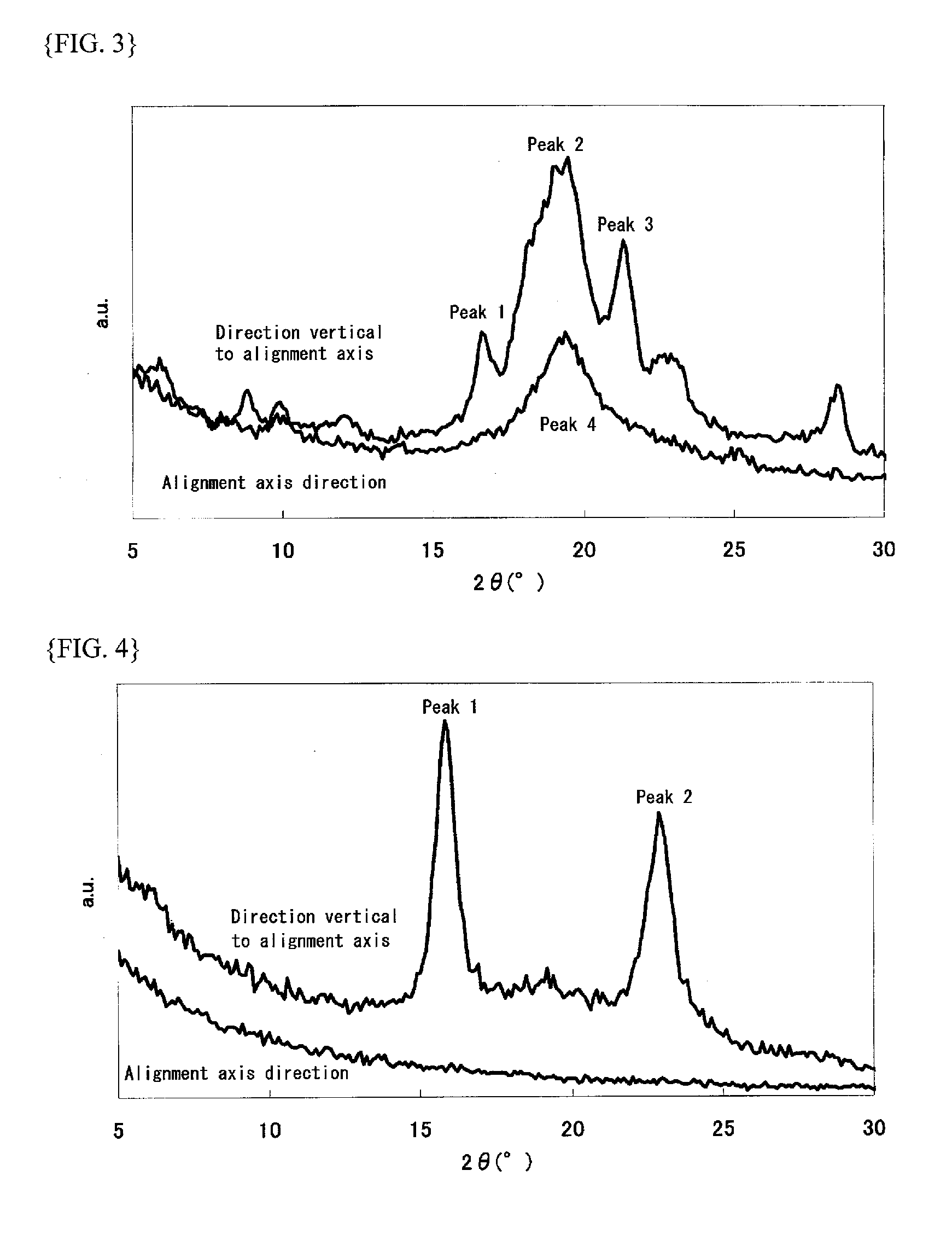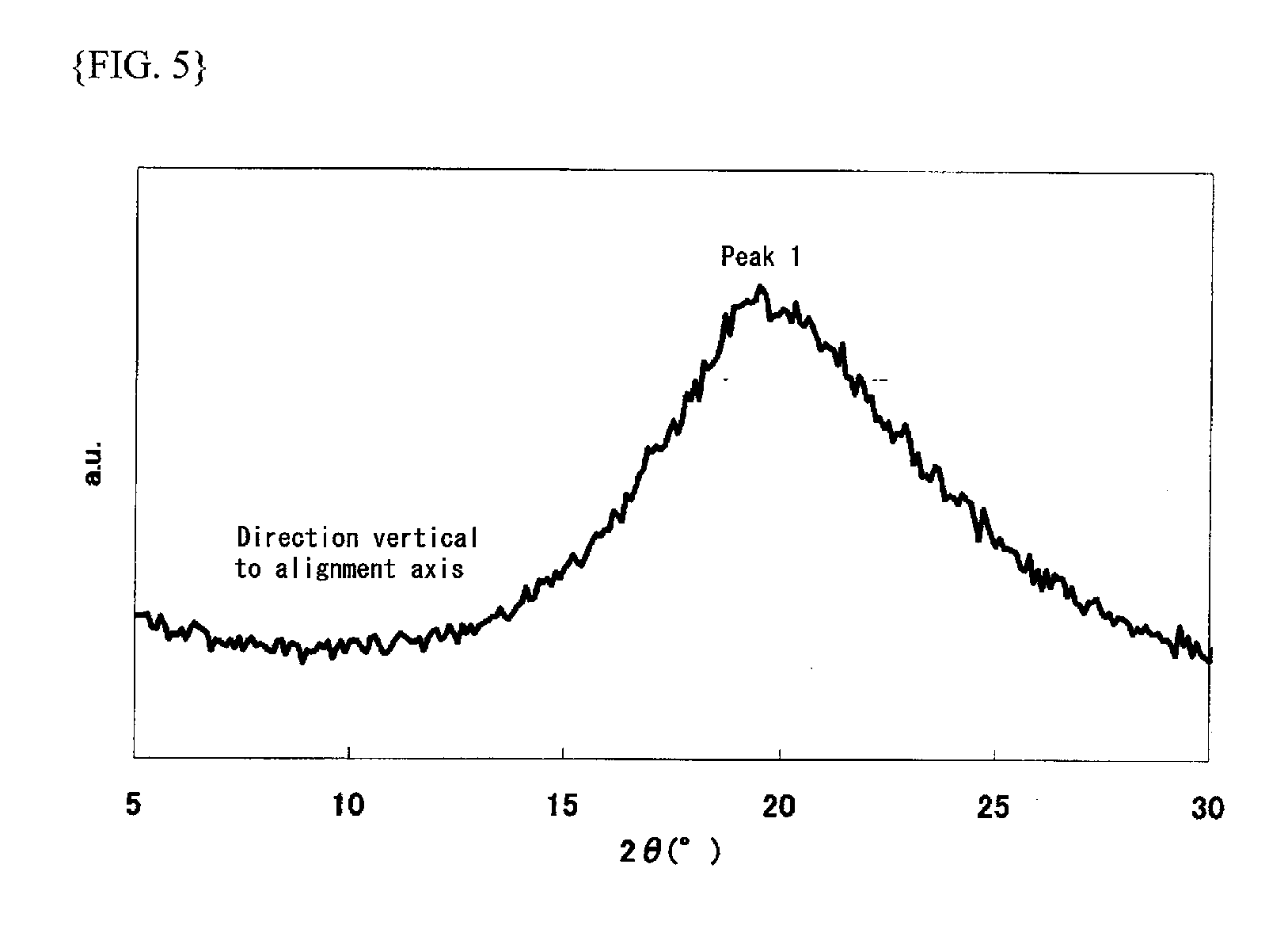Dichroic dye composition, light absorption anisotropic film, and polarizing element
a technology of anisotropic film and dye composition, which is applied in the direction of polarizing elements, nuclear engineering, synthetic resin layered products, etc., can solve the problems of insufficient heat resistance and light fastness of the dye composition, and the inability to obtain the ideal achromatic color polarizing element in the entire visible spectral region, and achieve excellent heat resistance and light fastness, and excellent polarization performance
- Summary
- Abstract
- Description
- Claims
- Application Information
AI Technical Summary
Benefits of technology
Problems solved by technology
Method used
Image
Examples
example 1
[0319]2 parts by mass of the exemplified dye (A-46) was dissolved in 98 parts by mass of chloroform with stirring, to obtain a dye solution for a light absorption anisotropic film (coating liquid). The dye solution was coated by spin coating on a glass substrate having a polyvinyl alcohol alignment film (trade name: PVA-103, manufactured by Nissan Chemical Industries, Ltd.) that had been subjected to a homogeneous alignment treatment by rubbing, followed by spontaneously drying and heating at 70° C. for 1 minute, to obtain a light absorption anisotropic film.
[0320]The thickness of the film was 0.2 μm.
[0321]The thus-obtained light absorption anisotropic film had a dichromatic ratio of 21. The X-ray diffraction pattern obtained from the direction vertical to the alignment axis (the direction in which the diffraction surface vertical to the transmission axis is observed) and the alignment axis direction (the direction in which the diffraction plane vertical to the absorption axis is ob...
example 2
[0322]2 parts by mass of the exemplified dye (A-58) was dissolved in 98 parts by mass of chloroform with stirring, to obtain a dye solution for a light absorption anisotropic film. The dye solution (coating liquid) was coated by spin coating on a glass substrate having a polyvinyl alcohol alignment film (trade name: PVA-103, manufactured by Nissan Chemical Industries, Ltd.) that had been subjected to a homogeneous alignment treatment by rubbing, followed by spontaneously drying and heating at 40° C. for 1 hour, to obtain a light absorption anisotropic film. The thickness of the film was 0.2 μm.
[0323]The thus-obtained light absorption anisotropic film had a dichromatic ratio of 18. The X-ray diffraction pattern obtained from the direction vertical to the alignment axis and the alignment axis direction of the film is shown in FIG. 2. Four peaks were detected in the direction vertical to the alignment axis, and one peak was detected in the alignment axis direction. The periods and half...
example 3
[0324]2 parts by mass of the exemplified dye (C-10) was dissolved in 98 parts by mass of chloroform with stirring, to obtain a dye solution for a light absorption anisotropic film. The dye solution (coating liquid) was coated by spin coating on a glass substrate having a polyvinyl alcohol alignment film (trade name: PVA-103, manufactured by Nissan Chemical Industries, Ltd.) that had been subjected to a homogeneous alignment treatment by rubbing, followed by spontaneously drying and heating at 40° C. for 1 hour, to obtain a light absorption anisotropic film. The thickness of the film was 0.2 μm.
[0325]The thus-obtained light absorption anisotropic film had a dichromatic ratio of 18. The X-ray diffraction pattern obtained from the direction vertical to the alignment axis and the alignment axis direction of the film is shown in FIG. 3. Two peaks were detected in the direction vertical to the alignment axis. The periods and half widths obtained from the respective peaks are shown in Tabl...
PUM
| Property | Measurement | Unit |
|---|---|---|
| Thickness | aaaaa | aaaaa |
| Fraction | aaaaa | aaaaa |
| Light | aaaaa | aaaaa |
Abstract
Description
Claims
Application Information
 Login to View More
Login to View More - R&D
- Intellectual Property
- Life Sciences
- Materials
- Tech Scout
- Unparalleled Data Quality
- Higher Quality Content
- 60% Fewer Hallucinations
Browse by: Latest US Patents, China's latest patents, Technical Efficacy Thesaurus, Application Domain, Technology Topic, Popular Technical Reports.
© 2025 PatSnap. All rights reserved.Legal|Privacy policy|Modern Slavery Act Transparency Statement|Sitemap|About US| Contact US: help@patsnap.com



